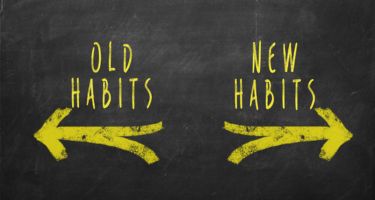Body language plays a vital role in how we communicate and connect with others. By improving our understanding of body language, we can enhance our self-confidence and improve our interactions. Simple changes in posture, gestures, and eye contact can make a significant difference in how we come across to others and how they perceive our messages.

As we explore the essentials of body language, we will uncover how nonverbal cues can express our feelings and thoughts. This knowledge not only helps us become better communicators but also empowers us to read the cues of those around us. Understanding these dynamics allows us to respond more effectively, leading to more fruitful interactions in both personal and professional settings.
Let us embark on this journey to master body language together. We will share techniques that promote self-awareness and confidence, enabling us to show our best selves in any situation.
Key Takeaways
- Mastering body language can boost our self-confidence.
- Effective communication involves understanding both our gestures and those of others.
- Simple techniques can help us improve our body language skills.
The Essentials of Body Language
Body language plays a crucial role in how we communicate. It includes our posture, gestures, and other nonverbal cues that convey feelings and intentions. By understanding these elements, we can enhance our interactions and better express ourselves.
Understanding Nonverbal Communication
Nonverbal communication refers to the signals we send without using words. This includes body movements, facial expressions, and the tone of our voice.
Key components of nonverbal communication include:
- Facial Expressions: Our faces can express a wide range of emotions, such as happiness, sadness, or anger.
- Gestures: Movements of our hands or arms can emphasise points or indicate agreement.
- Eye Contact: Making eye contact shows confidence and engagement.
Being aware of how we use nonverbal cues can help us understand others better and improve our communication skills.
Elements of Posture and Their Meanings
Posture significantly impacts the messages we convey. It can reflect confidence, openness, or defensiveness.
Here are some common postures and their meanings:
- Open Posture: Standing or sitting with arms uncrossed signals openness and receptiveness.
- Closed Posture: Crossing arms or legs may indicate discomfort or defensiveness.
- Leaning Forward: This often shows interest and engagement in the conversation.
By consciously adjusting our posture, we can send more positive signals and enhance our self-presentation in various situations.
Interpreting Common Gestures and Postures

Understanding body language is crucial for effective communication. By interpreting common gestures and postures, we can gain insights into emotional states and intentions. This section will explore facial expressions, the significance of eye contact, and the role of hand gestures in communication.
Decoding Facial Expressions
Facial expressions are powerful indicators of emotion. We often use microexpressions, which are brief and involuntary, to convey feelings like happiness, anger, or surprise. For instance, a genuine smile involves the entire face, particularly the eyes, indicating true joy.
Conversely, a forced smile might only involve the lips, suggesting discomfort or insincerity. Recognising these subtle differences can enhance our interactions. It's valuable to note that cultural differences could influence expression interpretation.
The Language of Eye Contact
Eye contact serves as a key part of nonverbal communication. When we maintain eye contact, it shows interest and attentiveness. This connection helps foster trust in conversations.
However, too much eye contact could signal aggression or dominance. If someone frequently looks away, it may indicate discomfort or disinterest. The balance of eye contact can differ across cultures, so we should be mindful of these variations to avoid misunderstandings.
Significance of Hand Gestures
Hand gestures add depth to our words. They can emphasise points, express emotions, or clarify ideas. For example, an open palm often conveys openness and honesty. A firm handshake can indicate confidence and agreement.
Conversely, crossed arms may imply defensiveness or rejection. Common gestures like thumbs up signal approval, while pointing can be seen as aggressive in some contexts. Understanding these signals enhances our communication effectiveness and helps us interpret others' emotional states better.
The Psychology Behind Body Language

Body language communicates a wealth of information about our emotions and mental health. By examining nonverbal cues, we can gain insights into our own emotional states and understand how others feel. This section explores the connections between nonverbal cues and emotions, as well as the impact of body language on mental health.
Link Between Nonverbal Cues and Emotions
Nonverbal cues are powerful indicators of our feelings. Things like facial expressions, posture, and gestures can reveal what we are experiencing internally. For instance, a smile often signifies happiness, while crossed arms may suggest defensiveness.
Research shows that we can express a vast range of emotions through body language. Specific cues can signal joy, sadness, anger, or anxiety. By observing these cues, we can better connect with ourselves and others. This understanding can lead to improved relationships and greater emotional awareness.
Body Language and Mental Health
Our body language not only reflects our emotional state but can also influence our mental health. For example, adopting an open posture and maintaining eye contact can enhance our confidence and mood. By consciously adjusting our nonverbal behaviours, we can promote positive emotions.
Conversely, negative body language can contribute to feelings of insecurity or depression. Slouching and avoiding eye contact might reinforce a negative self-image. Recognising the power of body language helps us take control of our emotional well-being. Making small changes can result in significant shifts in how we feel and interact with others.
Exhibiting and Building Self-Confidence

To build self-confidence, we can focus on specific behaviours that enhance our presence and how others perceive us. A firm handshake and open body language are key elements in demonstrating assurance and approachability.
Power of a Firm Handshake
A firm handshake is crucial in setting a positive tone during greetings. It conveys confidence and respect to the other person. When we meet someone, we should aim for a handshake that is both firm and brief, ensuring it feels natural.
Tips for a Strong Handshake:
- Chin Up: Keeping our chin up projects confidence.
- Make Eye Contact: This shows we are engaged and sincere.
- Avoid Fidgeting: A confident grip shouldn't be accompanied by nervous behaviours.
By mastering this simple action, we can create a strong first impression that establishes our self-confidence.
Maintaining an Open Body Language
Open body language is essential for making connections. We should focus on our stance and gestures to appear more approachable. Standing tall, relaxing our arms, and avoiding crossed limbs can significantly impact how others perceive us.
Elements of Open Body Language:
- Take Up Space: Using our physical presence signals confidence.
- Relaxed Posture: Standing or sitting up straight shows self-assuredness.
- Gestures: Using natural gestures while speaking makes us seem more friendly and engaging.
By practising these behaviours, we enhance our confidence and create a welcoming atmosphere for others.
Identifying and Addressing Negative Body Language
To improve our interactions, it is essential to recognise negative body language and understand how to shift it to a more positive form. This involves identifying specific signs we might exhibit and learning techniques to transform these behaviours.
Recognising Defensive or Closed Postures
We often display negative body language without realising it. Defensive postures like crossed arms and leaning away signal discomfort or hostility. These gestures create barriers in communication and may push others away.
Another sign is a fake smile, which lacks genuine emotion and can be spotted by its quick disappearance. We might also notice self-soothing behaviours, such as rubbing hands or tapping feet, which indicate anxiety. Personal space plays a role too; standing too close can feel invasive and uncomfortable. By being aware of these cues, we can better assess our own body language.
Transforming Negative into Positive Body Language
Recognising negative body language is only the first step. We can take action to change our gestures into positive ones. For instance, uncrossing arms and leaning in can show openness. Using a genuine smile helps convey warmth and sincerity.
To alleviate nervous habits like tapping or fidgeting, we can practice mindfulness. We may focus on our breathing to calm ourselves during tense situations. Practising positive body language not only improves our communication but also fosters better relationships. Emphasising eye contact and nodding shows engagement and interest. By consciously adopting these techniques, we can enhance our interpersonal connections significantly.
Reading and Responding to the Body Language of Others
Understanding and reacting to others’ body language can significantly improve our communication skills. By interpreting nonverbal cues, we can gain insight into people's feelings and intentions, allowing us to respond appropriately.
Assessing Intentions and Feelings
To assess someone’s intentions, we can observe specific body language signals. For instance, crossed arms might suggest defensiveness, while an open posture can indicate approachability. Eye contact is also crucial; consistent eye contact often shows interest, whereas avoiding eye contact might suggest discomfort or dishonesty.
We should also pay attention to facial expressions. A genuine smile involves more than just the lips; it includes the eyes. By recognising these subtle cues, we can better understand a person's emotional state. This skill is particularly helpful in settings where social anxiety disorder may make direct verbal communication challenging.
Enhancing Interpersonal Communication Skills
Developing our ability to read body language enhances our communication skills. As we learn to interpret gestures and expressions, we can tailor our responses more effectively. For example, if we notice a friend fidgeting, we might choose to address their concerns or offer reassurance.
Practising active listening combined with nonverbal cues is essential. Nodding and leaning slightly forward can indicate that we are engaged and interested in what someone is saying. This can encourage open dialogue and help build stronger relationships. By honing our skills in interpreting body language, we create a more inviting atmosphere for meaningful connections.
Self Help Techniques for Body Language Mastery
To enhance our body language skills effectively, we must focus on self-awareness and practice in various social settings. Additionally, understanding how to manage social anxiety through our non-verbal signals can greatly improve our interactions.
Improving Your Own Body Language Skills
Improving our body language starts with self-awareness. We must observe our own habits, such as facial gestures and posture. Standing or sitting with a straight back and relaxed shoulders conveys confidence.
Additionally, we should practice maintaining appropriate personal space. This ensures we do not invade others' comfort zones while still appearing approachable.
Making a conscious effort to avoid common habits, like touching our face or fidgeting, can also enhance our non-verbal communication.
Regularly practising in front of a mirror can help us become aware of our expressions and gestures. This practice allows us to refine our skills over time, leading to improved self-esteem in social situations.
Dealing with Social Anxiety Through Body Language
Managing social anxiety effectively involves using body language to create a sense of calm for ourselves and others. One key technique is to maintain an open posture. This makes us feel more relaxed and invites others to engage.
When feeling anxious, we often close ourselves off, crossing our arms or avoiding eye contact. Instead, focusing on facial gestures, such as smiling, can make interactions feel less intimidating.
Using deep, controlled breathing to settle our nerves can also positively influence our body language. This will help to portray confidence, even when we may not feel it internally.
Gradually exposing ourselves to social settings, while applying these techniques, can lead to comfort over time. We build resilience and create a more positive experience in our interpersonal relationships.
Frequently Asked Questions
Body language plays a crucial role in how we communicate and connect with others. Understanding its nuances can enhance our interactions significantly. Below are some common questions related to body language and its impact on our daily lives.
How can one's attraction be determined through their body language?
Attraction can often be seen through nonverbal cues. For example, leaning in closer, maintaining eye contact, and mirroring another person's movements can indicate a level of interest. Smiling and open body posture also signal positive attraction.
What are some clear examples of positive body language in communication?
Positive body language includes gestures like nodding while listening, using an open posture, and giving a warm smile. These cues create an inviting atmosphere. Additionally, making consistent eye contact shows engagement and confidence in conversation.
Could you list and explain the types of body language commonly observed?
There are several types of body language to observe. Facial expressions convey emotions, while gestures can emphasise points. Posture reflects our confidence, and eye contact indicates interest—likewise, tone of voice conveys our feelings beyond words.
In what ways does our body language affect the interpretation of our spoken words?
Our body language can either reinforce or contradict what we say. For instance, crossed arms may suggest defensiveness, even if we are verbally expressing openness. The mismatch between words and body cues can lead to confusion and misunderstandings.
How might one improve their body language to positively influence their personal and professional relationships?
Improving body language starts with self-awareness. Practising an open posture and maintaining eye contact can enhance our presence. Regular feedback from trusted friends can also help us adjust our nonverbal signals to be more effective in communication.
What strategies can be employed to accurately read and understand others' body language?
To read body language effectively, we can focus on observations rather than assumptions. Paying attention to clusters of gestures, such as facial expressions paired with posture, increases understanding. Context is essential; different situations can change the meaning of specific body cues.





















